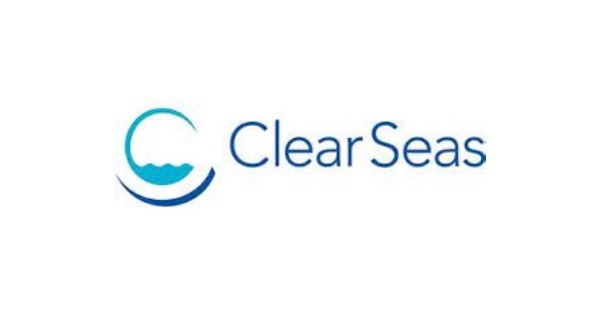Message from Clear Seas Centre for Responsible Marine Shipping
Amid a growing recognition of the impacts of commercial marine shipping traffic on climate change, the environment, and human health, the shipping industry is beginning to adopt cleaner and greener ways of operating. Many of the initiatives and measures taken have not yet been applied to the Arctic, but changing the ship’s fuel to produce fewer pollutants and reduce global warming potential is a tactic that has been employed to some extent almost everywhere around the world. To provide evidence to support communities and ship operators in their decision-making, this report seeks to evaluate the role of liquefied natural gas (LNG) as a fuel for ships in the Canadian Arctic to reduce pollution and global warming.
This collaborative study, conducted by the Canadian Natural Gas Vehicle Alliance, Vard Marine, and Clear Seas Centre for Responsible Marine Shipping with matching funding from Transport Canada’s Innovation Centre, investigated the feasibility, benefits, and risks of the use of LNG to replace some or all the diesel and heavy fuel oil (HFO) used for shipping and other needs – such as electricity – in the Canadian Arctic. LNG is a cost competitive option compared to distillate and diesel fuels and it has the potential to reduce greenhouse gas emissions by up to 25% and other air contaminants, such as sulphur oxides, particulate matter and black carbon, by 80% or more, depending on fuel source for lifecycle emissions and engine technology for amount of methane emissions.
In the Arctic region, a ban on HFO is coming into effect starting in 2024 to reduce the risk of oil spills and the amount of locally generated black carbon from ships. Recognizing the Arctic is experiencing the effects of climate change at a faster rate than the rest of the world, there is growing interest and investigation into alternative ship fuels that are being proposed as solutions to decarbonizing marine shipping. However, some alternative fuels – including hydrogen, ammonia, methane, methanol – are in the early stages of investigation and not yet viable for large-scale commercial marine shipping applications. With growing pressure to attain net-zero emissions from shipping, use of LNG as a ship fuel in the Arctic could form part of a pathway to renewable bio-LNG and finally to zero emissions synthetic methane electric-fuel to meet these objectives. This study did not assess or model renewable natural gas, which can reach or exceed net-zero emissions outcomes, because the supply is limited and the cost is high – but considering the cost per tonne of greenhouse gases, renewable natural gas may become a pathway to net-zero for some situations.
In addition to describing ship engine technology and the availability of LNG supply for different ship routes, this study also sought out a range of opinions and perspectives on the topic of LNG as a fuel in the Arctic from the Inuit homeland, government, industry, shipping, and environmental nongovernmental organizations. The participants recognized the urgency of the conversation and the
need for this study. Those who live in the Canadian Arctic and rely on its lands, waters, and wildlife for survival are especially aware of the impacts of a warming environment. In the short term, ice formation is more unpredictable; in the long term, a longer ice-free season is anticipated, which will open the Arctic to even more shipping traffic of different types of vessels with different patterns of movement. In this remote and fragile environment, where even one ship can have a significant impact on a community, more shipping traffic increases the risks of fuel spills, underwater noise pollution, introduction of invasive species, as well as air pollution and greenhouse gas emissions. When stakeholders in international shipping meet to talk about issues like decarbonization and increased marine traffic, Indigenous Peoples need to be present at the table. In the Arctic, Inuit have thousands of years of habitation in the region. The importance of Indigenous perspectives is why Inuit Circumpolar Council Canada applied for and received provisional consultative status at the International Maritime Organization. They are the first Indigenous organization to gain this standing and sought it due to their awareness of the threats from international shipping to their ways of life. The opportunities for shipping companies of economic expansion and increased ship traffic need to be balanced against the Inuit way of life, where human health and food sources depend on a healthy environment and freedom of movement.
The search for an optimal fuel is a key part of this conversation, and this study poses a central question: Is LNG a better option for the Arctic than petroleum-based distillate fuels like marine diesel oil (MDO) or ultra-low sulphur diesel (ULSD)? Any fuel presents risks to human health and the environment, but fuel is needed to get the goods communities need and connect Inuit to the rest of the world. In assessing the benefits and risks of LNG as a fuel for shipping and as part of the transition to a decarbonized shipping fleet, this study considers the health, climate and cost implications for communities, shipping companies, industry, and regulators. As this study illustrates, LNG is already in use in Canada and in the Arctic region. With a careful approach to ongoing use, regulatory oversight and economic analysis, LNG use in the Arctic marine sector can provide the region with a number of benefits. Air pollutant and emissions reductions and local environmental benefits can be attained in conjunction with energy and economic opportunities for the region. Though not without risks, marine use of LNG is an option for Canadians to consider.
Source: Clear Seas









































